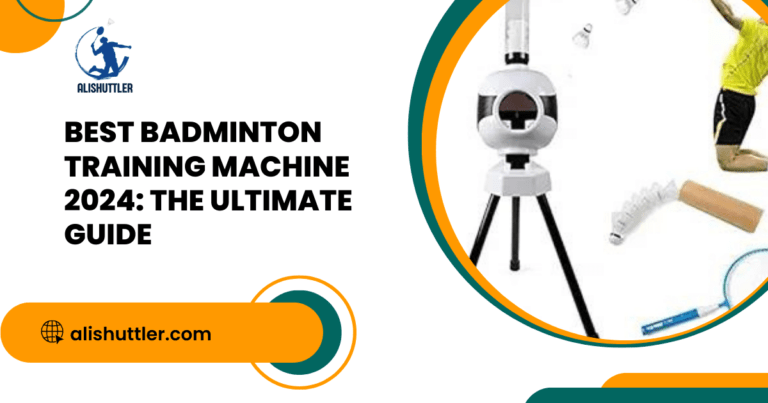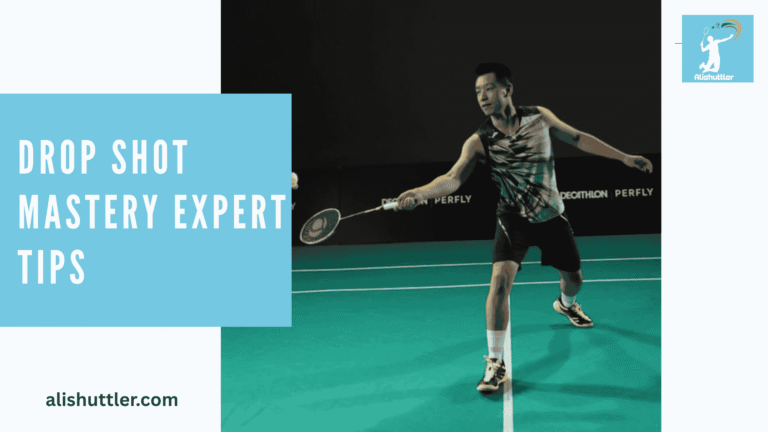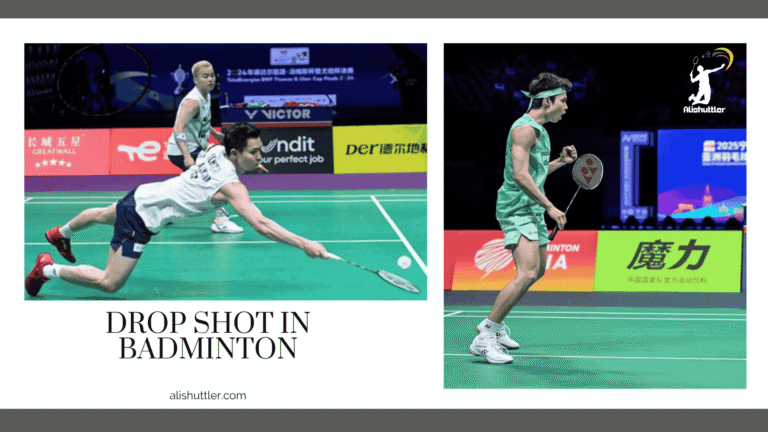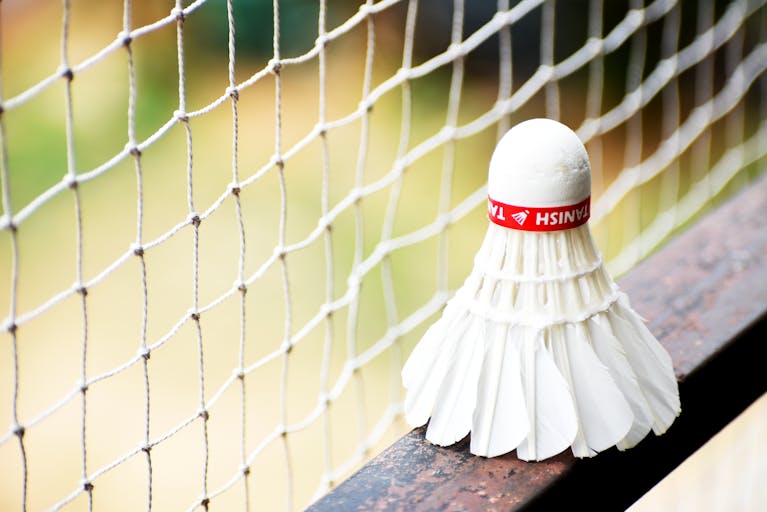Badminton habits are tiny behaviors which aid players improve and have more fun. Great habits are warming up before every match, practicing footwork, holding the racket correctly and playing in good spirit.
These habits can help both rookies and veterans. As many coaches and players will tell you, simple, consistent habits yield consistent progress.
The following chapters address essential habits and how to incorporate them into daily play.
Foundational Skills
They form a player’s capacity to stride, respond, and punch intentionally. These skills tie back to the sport’s origins, which developed from battledore and shuttlecock and emphasize hand-eye coordination and dexterity. Learning the game’s fundamentals such as the standard-sized 13.4 meter court and its distinctive shuttlecock is foundational.
Essential grips for badminton include:
- Forehand grip for overhead shots
- Backhand grip for returns and defensive plays
- Panhandle grip for net kills and drives
- Thumb grip for backhand pushes and lifts
The Grip
Grip is key to shot precision and control. Every stroke–smash, drop or net play–requires a marginal switch in the way your racket is gripped. For novices, throwing the shuttle overhead at a 90 degree angle begins to establish muscle memory and introduces the concept of grip changes.
Players should experiment with varying grip pressures. Gripping the racket too tightly will limit wrist motion, too loose and you lose power in your shots. A loose grip is best for dinks at the net but tighter for power slams.
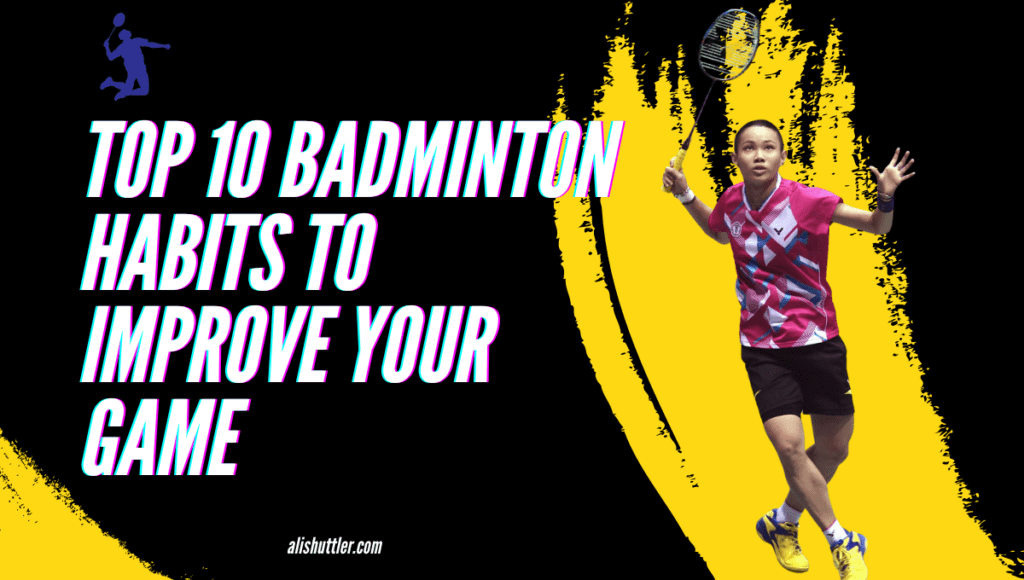
Grip drills–such as quick flipping between fore and backhand–assist engrain the proper behaviors over time.
The Stance
A balanced stance provides a player stability and preparedness. Feet shoulder-width apart provide faster side steps and more shot preparation. Weight should rest lightly on the balls of the feet, which quickens reaction times and facilitates quick shifts.
The stance changed with every type of shot. When attacking, a forward weighted stance helps in smashes. On defense, a more upright position helps player cover the court.
With a proper stance, returns slip more easily when the shuttle streaks at blazing speed, as it often does in this sport.
The Footwork
Good footwork is quick, smooth moves across the court. Body alignment drills on the move assist players to line up shots more effectively. Lunging and quick recovery are key, particularly as shuttles can fly at speeds and momentum that necessitate rapid directional changes.
Shadow badminton, in which a player dashes without a shuttle, generates habits for remaining light on the feet. This type of practice enhances both speed and coordination, essential for dealing with the shuttle’s rapid air travel.
The Serve
Serving is a layered skill. Players should experiment with different tactics, like the low serve for singles or the high serve for doubles. Shoot for the long service line, which in doubles is 0.76m from the back boundary.
Repeat serve drills can mean more points. Review game film to identify weaknesses and adjust accordingly.
The Strokes
Forehand and backhand strokes contour the majority of in-play rallies. Really getting down basic shots, like the smash and drop, builds confidence. By practicing these strokes with an emphasis on timing and mechanics, you minimize mistakes.
Stroke drills, repeated regularly, assist in maintaining technique acumen well beyond your time on the court.
Cultivating Good Habits
Good habits are the spine of consistent advancement in badminton, especially for beginners. Developing correct posture and mastering badminton techniques protects players from injury and ensures improved play at all levels.
1. Consistent Warm-ups
A comprehensive warm-up checklist begins with dynamic stretches such as arm circles, leg swings, and light lunges. These moves loosen up joints and prime the body for fast-paced play. Concentrate on your shoulders, wrists, knees, and ankles—they grind the most during rallies.
Try for a minimum of 10, which allows muscles a chance to warm up and reduces your chance of pulls or sprains. Warming up establishes the proper mindset, assisting players in making the transition from everyday stress to the court in front of them.
2. Deliberate Drills
Drills must have a purpose. For instance, ladder drills hone footwork, and net drop drills develop touch. Reserve blocks for these deep drills rather than just gaming.
Over time, tracking scores or recording videos can demonstrate if your accuracy or speed is getting better. Request a coach or partner for tips when doing drills–external feedback identifies minor mistakes and keeps progress focused.
3. Proper Cool-downs
A cool-down begins with static stretches for the arms, legs, and back. Hold each stretch for 20–30 seconds to aid muscle relaxation. Breathing exercises—like slow deep breaths—help bring the body out of hyper play and calm the heart rate.
Dedicate a minimum of 5–10 minutes post-workout to reduce future soreness or tightness. Take this moment to consider what went right and what could use work the next time around.
4. Strategic Practice
A good plan combines individual skill work with match simulation. Drill under timed rallies or shot restrictions to simulate competition. Establish 1 or 2 goals per session—such as increasing smashes or reducing unforced errors—to keep training focused.
After practice, check in—what worked?
5. Active Recovery
Low-impact activities—like walking, cycling, or gentle yoga—assist in muscle recovery without exerting excessive pressure. Take at least one rest day per week, allowing your body to recover.
Respect pain or fatigue, which indicate when to back off or be more careful. Foam rolling or a quick massage can loosen tight areas and prime the body for the next bout.
Destructive Habits
Badminton players inadvertently acquire destructive habits, even if they play several times a week. These habits develop over months or years, and most never recognize them until the performance plateaus. It requires time, patience, and consistent practice to identify and correct these habits.
Getting feedback from others or watching match videos can assist, but the process demands a well-defined plan and a strong determination to change.
Wrong Grip
A bad grip can alter the trajectory of a shot, impede a follow through, or even result in pains in the wrist or arm. Players need to check their grip frequently, ensuring that it corresponds to the shot they want to play. Changing grips quickly is crucial, since each shot could require a subtle adjustment.
A weak grip can result in missed points, weak smashes, or strain that causes injuries down the road. Players who request advice from coaches or training partners can frequently address grip issues before they worsen.
Poor Footwork
If you cross your feet or use sloppy lunges, it’s difficult to get moving quickly and play powerful strokes. Most players don’t devote enough time to footwork drills, yet these are among the most practical practice exercises.
By watching match videos, players can identify times when they were out of position or sluggish. Maintaining a low center of gravity assists with balance and speed, necessary for rapid directional changes.
Late Preparation
When a player hesitates before preparing to take a shot, they waste time and can miss simple returns. Predicting the enemy’s next move and responding swiftly can assist. Early-preparation drills cultivate habits that stick under pressure.
After matches, players should reflect on instances they were sluggish to prepare and strategize.
Static Positioning
Standing in one place during a rally makes it difficult to run after shots. Dynamic movement must be a habit on the court. So drills that expose players to movement should get some love.
Shifting position rapidly keeps the player prepared for anything. Being in an athletic stance helps with quick steps.
Predictable Shots
Recycling the same shots all the time makes it easy for opponents to read the game. Shot angles, speeds, and trick shots all help you throw off a rival’s timing.
Inspecting game footage for patterns can indicate where to introduce variety.
Over-swinging
Directed swings beat wild, powerful swings. Short, sharp swings assist with control as well as speed. Video can be invaluable in detecting and correcting over-swinging.
Drills that emphasize accuracy over strength construct stronger habits.
Neglecting Defense
- Stay alert and ready for both smashes and drops
- Use split steps to react fast
- Position body for quick side-to-side movement
- Anticipate an attacker’s shot to position for a block or dig
Ignoring The Serve
A powerful serve establishes the rhythm for every rally. Practice each for a session until they seem natural. Discover what stings every foe.
Master the guidelines to prevent fouls and dropped points.
Emotional Play
Emotions muddy judgment. Mindfulness keeps you on point during pressure-packed games. After a bout, reflect on what sent you spiraling and strategize for next time.
Visualization prior to games can construct calm.
Skipping Recovery
Rest is critical to prevent injury and maintain performance. Take days off when necessary. Look out for burnout.
Give light movement or stretching a shot on rest days for improved healing.
Elite Mindset
Elite badminton players often demonstrate great badminton expertise, grounded in a growth mindset. They view each match, regardless of the result, as an opportunity to learn and improve their Badminton Habits techniques. This mindset isn’t innate; with patience, dedication, and an emphasis on skill and mindset, you can develop it. Key habits include regular visualization, mindfulness, and resilience building, enabling players to remain calm and focused when things go wrong.
Visualization on Badminton Habits
Elite players visualize to prepare their mind for play, particularly focusing on badminton techniques that enhance their performance. They imagine themselves on the court, darting with precision and timing the perfect moves, including their footwork and return shots. Daily visualization is more than simply thinking about winning; it may involve replaying perfect badminton shots and even pre-match confidence.
For instance, others might shut their eyes prior to a match and visualize a grueling rally, envisioning themselves responding with equanimity and executing the appropriate court shots. This mental practice allows them to enter the match with a strategy and reduced anxiety, which is crucial for success against good opponents.
Fantasizing about various match situations can also be beneficial. This can involve picturing a surprise injury, a hard competitor, or a momentum shift, and visualizing yourself responding to it with composure. Doing this regularly develops mental concentration and prepares newcomers for genuine difficulty, ensuring they are ready for any circumstances that arise.
Mindfulness
Mindfulness keeps players’ heads clearer, even in pressure-packed games. Basic stuff like deep breaths or mindfulness can go a long way. For example, prior to a serve, a player could take slow, deep breaths. This does more than just calm your nerves it provides a moment to reset your focus.
Mindfulness ain’t just play, though. After a game, thinking back on your lapses in concentration allows players to identify trends and tune their attention for the future. Employing mindfulness entails remaining present during the match, not fretting about what you did wrong in the previous point or what may happen in the next.
This preserves energy on every shot and every rally, which is crucial for consistent play.
Resilience
Resilience in badminton is about learning from every match, win or lose. By establishing tiny, unambiguous goals e.g., Better footwork or fewer unforced errors, players can visualize and track improvement. By celebrating these small victories, you create confidence.
When a player hits a goal, even if they lose the match, it’s a reminder their effort is rewarded. Positive self-talk is yet another instrument. Repeating easy things like ‘I am prepared’ or ‘I’m flexible’ can enhance confidence. Resilient players review blow-ups, not to lament, but to understand.
They view every defeat as an education, not a defeat.
Teamwork for Badminton Habits
An elite mindset isn’t just about one person’s talents. It means collaborating, giving feedback, and establishing credibility. Great teams goal together, back each other, and stay in communication.
Trust and support, shared goals, open feedback, and respect are essential components of effective teamwork.
Off-Court Discipline Badminton Habits
Off-court discipline molds a Badminton Habits player’s habits as much as on-court practice. Having respect for your nutrition, hydration, and sleep assists in eroding bad habits and constructing better routines. Many players identify gaps in their footwork or badminton techniques and understand that modification requires serious work. Reforming off-court habits is never exclusively simple, but consistent decisions and quality backing do wonders.
Nutrition Badminton Habits
A balanced diet is crucial for all athletes. The main parts of a good plan include:
- Enough carbohydrates for energy
- Lean proteins to help repair and build muscle
- Healthy fats for long-term fuel
- Vitamins and minerals for immune and body function
- Plenty of water to aid digestion and recovery
| Nutrient | Food Example | Main Benefit |
|---|---|---|
| Carbohydrates | Brown rice, oats | Energy for play |
| Protein | Eggs, lentils | Muscle repair |
| Healthy Fats | Avocado, olive oil | Brain and joint health |
| Vitamins/Minerals | Leafy greens, berries | Immune system, recovery |
Before you workout, a light meal with carbs and protein keeps your energy high and helps prevent muscle fatigue. Post-activity, a protein and carb-loaded meal aids your body in repairing itself quicker. Badminton Habits players might require more carbs than athletes in other sports due to these rapid, high-energy bursts during matches.
For optimal results, others work with a nutritionist to customize meal plans to fit their individual workout requirements and objectives.
Hydration
Drink water prior to, during, and following any session. Good hydration keeps your attention and muscles working. For long or hard training, incorporate drinks with electrolytes to restore lost sodium and potassium. If you’re showing any signs of dehydration, dry mouth, headache, or dark urine, these can damage performance rapidly.
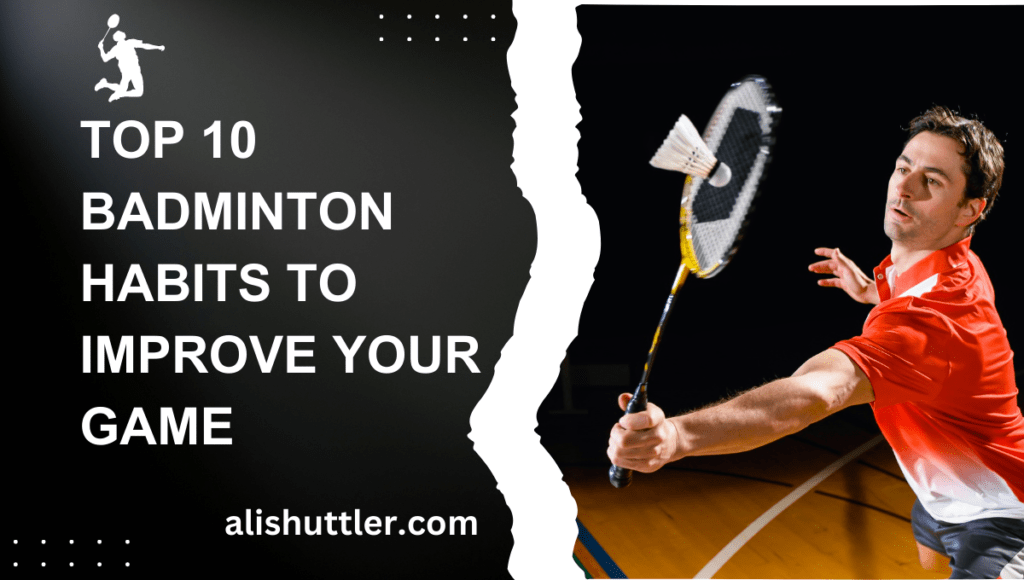
Initiate an easy habit, such as consuming a glass of water every hour, to maintain consistent hydration throughout the day.
Sleep Badminton Habits
Sleep is as important as diet or practice. Sound sleep allows muscles to recover and aids decision-making on the court. Develop a bedtime ritual, like reading or light stretching, to calm down. Monitor sleep to identify what improves or harms sleep quality.
Know that lost sleep can drag down both reaction time and learning — both prime in badminton.
Monitoring Badminton Habits
Identifying and acknowledging bad habits is part one. Self-checks, peer feedback, or even a ‘Just do it’ phrase can keep motivation hot. Most players depend on practice 4–6 days a week and others to keep them disciplined.
Change might be gradual but a robust community and consistent tips from veteran players cuts through the old habits.
Progress Tracking
Badminton Habits progress tracking allows players to quantify skill development, identify areas for improvement, and optimize their training. With transparent scoring, gamers observe what functions, implement actual swaps, and remain driven in the stretch.
The table below summarizes some of the main metrics to track over time during skill development.
| Metric | How to Measure | Frequency | Example Tool |
|---|---|---|---|
| Shuttle speed | Use radar gun or video analysis | Weekly | Smartphone app |
| Reaction time | Stopwatch or digital timer | Weekly | Online timer |
| Number of unforced errors | Count during matches/practice | Each session | Match log |
| Grip switching speed | Time trials in practice | Weekly | Stopwatch |
| Agility (e.g., court sprints) | Time to complete set drills | Weekly | Stopwatch |
| Core strength | Plank duration, sit-up count | Monthly | Physical test |
| Balance | Single-leg stand test | Monthly | Timer |
| Match win/loss record | Record outcomes | Each match | Match journal |
| Meditation duration | Track minutes meditated | Daily | Meditation app |
Video Analysis Badminton Habits
Video analysis allows players to deconstruct skills and habits visually. By capturing practice and match play, you can see precisely how shots are executed, how footwork rates, and whether tactics really work under pressure.
It’s much easier to identify trick-specific strengths and errors such as delayed grip switching, or missed foot sequences when watching these videos that can sometimes slip by in the moment.
Sending these videos to coaches or peers helps bring in external perspectives. Coaches can provide precise, actionable feedback after observing a match from multiple perspectives, catching tendencies that might elude a player’s self-examination.
Over time, holding on to these videos creates a history of progress. Observing progress from your initial sessions to this point, whether it’s more compact footwork, fewer unforced errors, or improved balance, maintains motivation and helps quantify what modifications result in the greatest improvements.
Goal Setting Badminton Habits
Goals provide training focus. Good goals are both what to work on now, like improving serve accuracy over the next month, and what to aim for long-term, like reaching a certain tournament stage within the year.
When you use SMART goals specific, measurable, achievable, relevant, time-bound it makes it clear to players and coaches precisely what success looks like.
It is equally important to review and adjust these goals. If a player achieves a goal ahead of schedule, then it’s time to establish a new one. If progress drags due to injury or schedule, goals can change to keep things realistic.
Acknowledging tiny victories, such as a quicker grip switch or a first win versus a difficult opponent, helps players stay connected to their own development.
Journaling on Badminton Habits
A training journal can be a notebook or a digital document. Post-session, note what drills worked, what felt tough, and what changes could help next time.
After a while, your journal will reveal unmistakable patterns of improvement quicker reaction times, longer plank holds, fewer missed shots. Journaling is great for self-checks.
Looking back, it’s simpler to notice if a weakness like slow footwork is recurring. Other players decorate it with inspirational quotes or inter-session goals to keep it interesting.
Periodic reviews, say every month, assist in tuning training plans. If a new drill results in improved balance, jot it down. If meditation aids pre-match nerves, chart its frequency and impact.
Feedback
Feedback from coaches and peers makes the training more precise. A coach can observe a drill and highlight if grip changes are sluggish or if footwork is lacking.
Peers see what coaches miss. Both assist in keeping progress tracking more honest and well rounded.
Feedback ought to be frequent. It maintains training on target and nips slacking tendencies in the bud.
Final Thoughts on Badminton Habits
Good badminton habits sprout from tiny, consistent increments. Sure, they’re great, but good grips, footwork and clear game plans do a lot. Bad habits like sloppy swings or lazy footwork hold you back. To play your best, keep your edge on and off court. Ace players log winners, unforced errors and areas to improve.
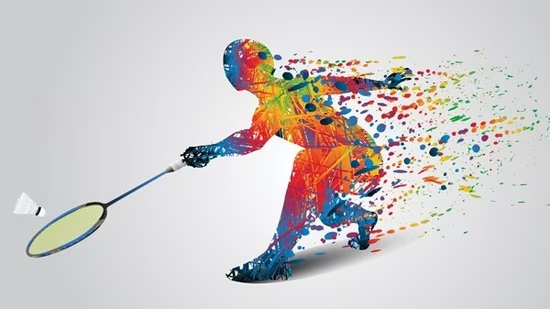
They establish simple, brief objectives and scale up. Off-court habits such as quality sleep and intelligent eating definitely contribute as well. A consistent strategy works in games regardless of your ability. To stay climbing, check your progress, experiment with new drills, and keep your eyes open for opportunities to play smarter. For additional advice and resources, see our complete guide and stay tuned for our updates.
Frequently Asked Questions
What are the most important foundational skills in badminton?
They are the most fundamental badminton techniques such as grip, footwork, and basic strokes. Mastering these skills enables you to move quickly and strike the shuttlecock precisely.
How do I build good badminton habits?
Practice and warm-up with badminton techniques to ensure a stable posture and consistency in your game.
What are common destructive Badminton Habits?
These bad habits, such as incorrect badminton techniques like bad posture and ignoring footwork, can sabotage your advancement in badminton and leave you prone to injury.
Why is an elite mindset important in badminton?
An elite mindset keeps you sharp, inspired, and persistent through practice and competition, which is essential for mastering badminton techniques.
How does off-court discipline impact badminton performance?
Healthy habits — good nutrition, rest, etc. — undergird your physical and mental health. This off-court discipline translates to better recovery, more energy, and improved badminton techniques for better on-court play.
What is the best way to track progress in badminton?
Maintain a training journal to log match results and define quantifiable goals. Periodic self-evaluation allows many players to recognize their strengths and weaknesses in badminton techniques.
Can bad habits in badminton be corrected?
Yep, with intentional practice and a coach, many players can wipe out bad habits by focusing on correct badminton techniques. Regular practice and feedback are key to long-term improvement.


